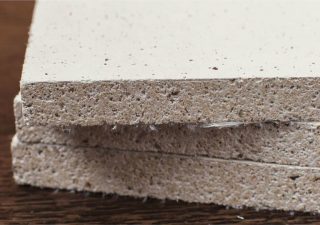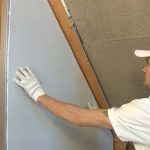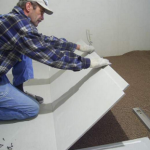Gypsum fiber sheets are similar to finishing drywall, but differ from it in characteristics. The material is represented by panels of a uniform structure, which do not have a cardboard cover on top. The density of the sheets is higher than that of the gypsum board, the indicator is 1.25 t / m³, the strength is higher, therefore, the installation of the gypsum board is carried out according to a different principle.
Material description
Panel sizes:
- 2500 x 1200 x 10 mm;
- 2500 x 1200 x 12.5 mm;
- 1200 x 1200 x 10 mm;
- 1500 x 1000 x 10 mm.
To increase moisture resistance, special additives are introduced into the mass, therefore there are types that can be installed in bathrooms, saunas, kitchens with a large volume of steam. The alignment of the walls of gypsum plasterboard is quick, while an ideal surface is obtained for finishing.
The material is called an improved version of drywall, finishing panels are free from the usual drawbacks, while they have many advantages.
Application area
Gypsum fiber panels are used for finishing vertical and horizontal surfaces in rooms where air humidity not more than 70%... These can be basements, garages, where the material is placed as a base for floors, on walls for further tiling.
Variants the use of plating GVL:
- living rooms with high humidity, but there is no direct action of water;
- partitions in storage rooms, unheated outbuildings;
- gymnasiums, sports grounds where hard walls are needed;
- finishing of industrial and living rooms with an increased risk of fire;
- attics, attics.
Material put on surfaces made of different materials... GVL is laid on stone, concrete, brick, shell rock, wood, aerated concrete.











